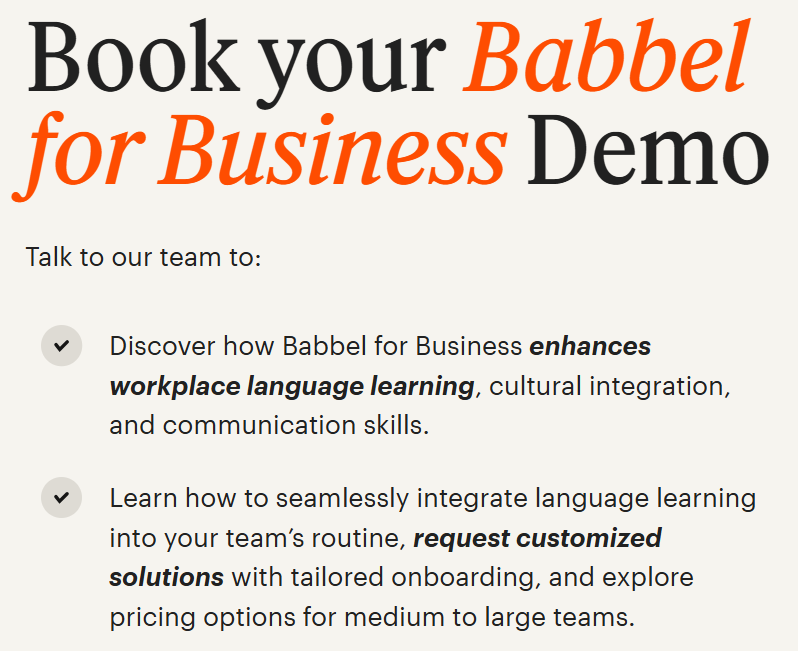In today’s global economy, having proficient German skills among your employees can significantly enhance communication, collaboration, and competitiveness in the market. A well-structured business German course can transform your workforce, allowing them to engage effectively with partners, clients, and colleagues who speak German. This is particularly crucial when expanding into German-speaking markets or working with German clients. However, not all German courses are tailored for the professional environment.
When selecting a language training program, it is vital to prioritize factors that will yield tangible benefits for both your employees and your organization. Below, we explore what to consider when evaluating a business German course for your team.
Table of Contents
- 1. Workplace-Relevant Content
- 2. A Method Designed for Adult Learners
- 3. A Blended Learning Format
- 4. Built-In Progress Tracking for HR and L&D
- 5. Scalability Across Locations and Teams
- 6. Dedicated Support for Admins and Learners
- The Bottom Line
1. Workplace-Relevant Content
Conventional language courses often focus on travel-related phrases and casual conversations. However, your employees need to learn business German phrases that they can apply directly to their work. Therefore, it’s essential to choose a course that emphasizes:
- Industry-Specific Vocabulary: Each sector has its own jargon. Look for courses that cover terms relevant to your industry, whether it’s manufacturing, logistics, finance, healthcare, or hospitality.
- Workplace Scenarios: The course should incorporate realistic scenarios such as team meetings, safety briefings, and customer service interactions to ensure learners can practice what they will encounter in their roles.
- Effective Communication Skills: It is crucial for employees to master business German vocabulary related to writing emails, making presentations, and negotiating contracts. This includes learning how to express ideas clearly and persuasively in a professional setting.
The most effective courses are those designed specifically for a professional context, moving beyond the basics to focus on language that facilitates successful business operations.
2. A Method Designed for Adult Learners
Understanding that your workforce consists of adult learners is critical. Unlike traditional classroom settings, employees juggle multiple responsibilities, including work commitments and personal obligations. Therefore, the language course should cater to the learning styles of adults, which typically includes:
- Structured Learning Paths: Courses should have clear milestones and objectives, allowing learners to see their progress and stay motivated.
- Brain-Friendly Techniques: Incorporating methods like active recall and spaced repetition can enhance retention and understanding of business German phrases.
- Respect for Existing Knowledge: Acknowledge the prior knowledge and experiences of learners. Courses should build upon their existing language skills rather than starting from scratch.
When adult learners find the content relevant and the learning process efficient, they are more likely to engage deeply and gain confidence in their language abilities.
3. A Blended Learning Format
A blended learning approach combines self-paced study with live instruction, which is particularly beneficial in language acquisition. Here’s why this matters:
- Conversation Practice: While apps can provide foundational knowledge, they cannot replace the nuances of conversation. Live sessions allow employees to practice speaking and receive immediate feedback.
- Cultural Nuances: Understanding the cultural context of language is essential in business. Live instruction can help convey these subtleties, which are often missed in self-study.
- Enhanced Engagement: The combination of different learning methods keeps learners engaged and helps reinforce retention, making the acquisition of business German vocabulary more effective.
Seek out providers that integrate both app-based learning and live classes to create a comprehensive language training experience.
Ready to expand your global reach?
Find out how mastering Spanish can unlock new opportunities for your team.
4. Built-In Progress Tracking for HR and L&D
Measuring the effectiveness of a language training program is essential for ensuring that it meets your organization’s goals. A robust business German course should provide:
- Analytics on Engagement: Track how often learners participate and complete lessons, which can help gauge motivation and interest.
- Language Proficiency Levels: Progress should be measurable against established frameworks, such as CEFR levels, to evaluate language acquisition effectively.
- Feedback Mechanisms: Both learners and instructors should have opportunities to provide feedback, allowing for continuous improvement of the program.
Advanced reporting capabilities, including team-level dashboards and integration with your Learning Management System (LMS), can further enhance your ability to monitor progress and demonstrate ROI to leadership.
5. Scalability Across Locations and Teams
As your organization grows, the language training program should be able to scale accordingly. Consider the following factors:
- Global Reach: The course should accommodate multiple locations and time zones, ensuring that all employees have access to training.
- Diverse Job Roles: Different teams may require varying levels of proficiency and specific vocabulary tailored to their functions.
- Flexible Learning Options: The program should cater to hybrid, on-site, and deskless teams, providing flexibility in how and when employees learn.
Choosing a scalable solution ensures that your investment in language training remains relevant as your organization evolves.

6. Dedicated Support for Admins and Learners
Implementing a new language program can be challenging, so it’s crucial to partner with a provider that offers robust support services. Look for:
- Comprehensive Onboarding: New programs should come with detailed onboarding processes to help administrators and learners understand how to maximize the course.
- Customer Success Management: A dedicated manager for your HR team can help navigate challenges and ensure the program runs smoothly.
- Instructor Engagement: Instructors should actively support learners, keeping them motivated and focused on their language goals.
Language acquisition is a journey that requires guidance and support, and your employees deserve a partner in their learning process.
The Bottom Line
Investing in a tailored business German course goes beyond teaching grammar; it empowers your employees to communicate effectively and confidently in their professional roles. When assessing potential courses, focus on:
- Content relevant to the workplace
- Adult learning strategies
- A blended learning model (combining app-based and live instruction)
- Progress tracking capabilities
- Scalability for diverse teams
- Support for both administrators and learners
By prioritizing these elements, you are investing not only in the language skills of your employees but also in your organization’s capacity for global engagement and success.

Ready to see what a modern business
German Course could do for your company?
Talk to our team to explore how we combine expert instruction, real-life scenarios, and flexible learning that fits your team’s schedule.






